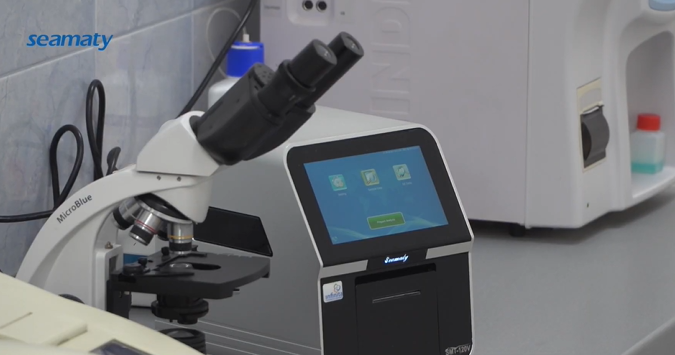What are Blood Counters?
Blood Counters are instruments used to measure the specific number of red blood cells, white blood cells, platelets, hemoglobin, etc. in the blood. The number of each type of blood cell is measured in the blood and the results of the test are compared to give the doctor a specific test to determine the threat of potential disease to the body.
Blood Counters Principle
Blood Counters are based on the non-conductive nature of blood cells, with one electrode inside and one outside of a microporous tube immersed in electrolyte. When the current is switched on, the two electrodes form a current, the power pump generates negative pressure, and the sample begins to be filled and absorbed.
Since the cell is a poor conductor, at the moment of passing through the micropore, the resistance increases and a corresponding pulse of conduction (voltage) is generated, called the passing pulse. The degree of voltage increase and change at this point depends on the volume of non-conducting cells occupying the induction zone of the micropore, i.e., the larger the cell volume, the larger the pulse caused, and the higher the amplitude of the pulse generated. Finally, it is then amplified, threshold adjusted, screened, shaped, counted and the result is obtained.
History of blood cell counters
Early blood cell testing devices date back to 1590. The most primitive microscope was designed and manufactured by the Dutch Middelburg and Jensen. Later this microscope was developed and improved, and in 1658 the Italian Malpighi observed red blood cells under the microscope for the first time. This led to the gradual realization that there was a relationship between the number of cells in the blood and the occurrence and development of disease, which in turn prompted scientists to begin researching methods of cell counting.
After more than 100 years of application, evolution and development, by 1953, Wallace H. Coulter and his brother Joseph R. Coulter, Jr. of Beckman Coulter, USA, after nearly a decade of effort, proposed the famous Coulter principle, the principle of electrical impedance, and were granted a U.S. patent that year.
The following year they introduced the first blood cell counter. Therefore, Coulter's principle has become the most classic principle in blood cell counting and analysis.
The origin of Beckman Coulter
In 1997 the American company Beckman acquired Coulter Corporation and changed its name to Beckman Coulter Corporation. Later the Danaher Group acquired Beckman Coulter, which is now known as Danaher Beckman.
1974 Hema log D, the first leukocyte analyzer with a preliminary leukocyte classification function, is introduced. This product initially classified leukocytes into five categories: lymphocytes, monocytes, eosinophils, basophils and neutrophils.
In 1980, the technology further matured and the H6000 blood cell analyzer was introduced, which was able to achieve a more accurate five-category classification of blood cells.
Since then, various companies have continued to push the envelope in leukocyte five-classification technology.
Representative products include.
1) Sysmex's combined multi-channel impedance, RF and cytochemistry detection technology.
2) Multi-angle polarized light (MAP) technology from Abbott.
3) Cytochemical lipid total staining technology combined with double sheath flow (DHSS) technology from ABX, etc.
Various types of Blood Counters are currently available from various Blood Counters manufacturers.
-
Automated Hematology Analyzer
-
Automated Five-Category Hematology Analyzer
-
Automated Trichromatic Hematology Analyzer
-
Dry blood cell counters
-
Semi-Automatic Blood Cell Analyzer
-
Blood Cell Counter
-
T-Lymphocyte Counter
-
(Non-flow) Leukocyte Counters
The structure of each type of Blood Counters varies. However, most of them consist of mechanical system, electrical system, blood cell detection system, hemoglobin determination system, computer and keyboard control system in different forms.


